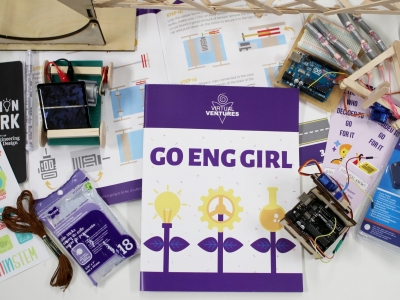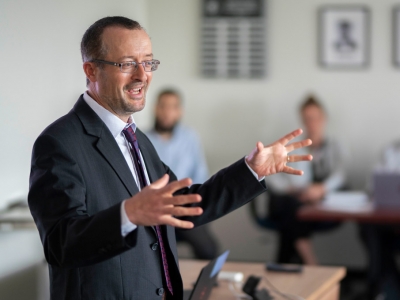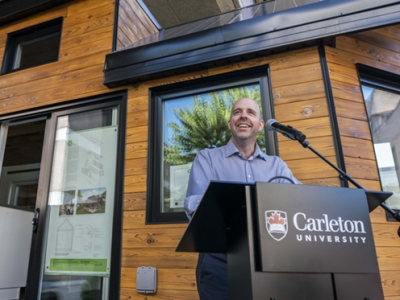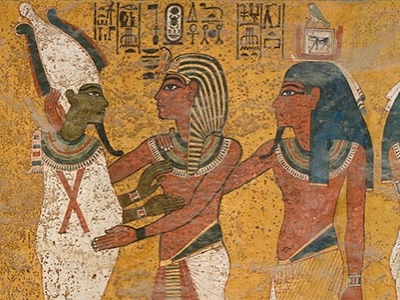By Leah Coppella
Photos by Justin Tang
A group of Carleton University engineering students were presented with the 2019 W.E. Cowie Innovation Award, valued at $25,000, for their fourth year project, Vehicle Tracking and Collision Avoidance for Autonomous Vehicles.
The W.E. Cowie Award is designed to recognize students in the final year of their Bachelor of Engineering degree for demonstrating innovation. The winning project’s team included Kyle Bjornson, Shane Corrigan, Benjamin Croskery, Benjamin Earle, Patrick Perron, Aydin Suatac, and Dillon Verhaeghe.
Professor Ramy Gohary, Department of Systems and Computer Engineering, supervised the fourth-year capstone design project. The multi-year project challenged interdisciplinary teams of undergraduate students to develop a tracking and crash avoidance system using features such as sensors, cameras and radars.
“This year, this group took it to a very different level,” says Gohary.
He says that the goal of an autonomous vehicle is to sense and understand traffic and to make the best decision based on it. And while many have participated in the project, this year’s team exceeded expectations.
The purpose of the project was to find cost-efficient solutions to common autonomous vehicle problems. The team used an ARM Cortex microcontroller which they interfaced with various modules: everything from ultrasonic, infra-red sensors, and cameras. By using certain calculations and processing, they were able to successfully avoid obstacles, identify lanes, measure vehicle speed, and determine its position on the road.
Earle, who attended the OCE Discovery 2019 conference in Toronto last May to share the project, says that all team members had a hand in each aspect of it. Earle focused on the integration of the camera and image processing algorithms, which was a challenge due to their limited hardware.
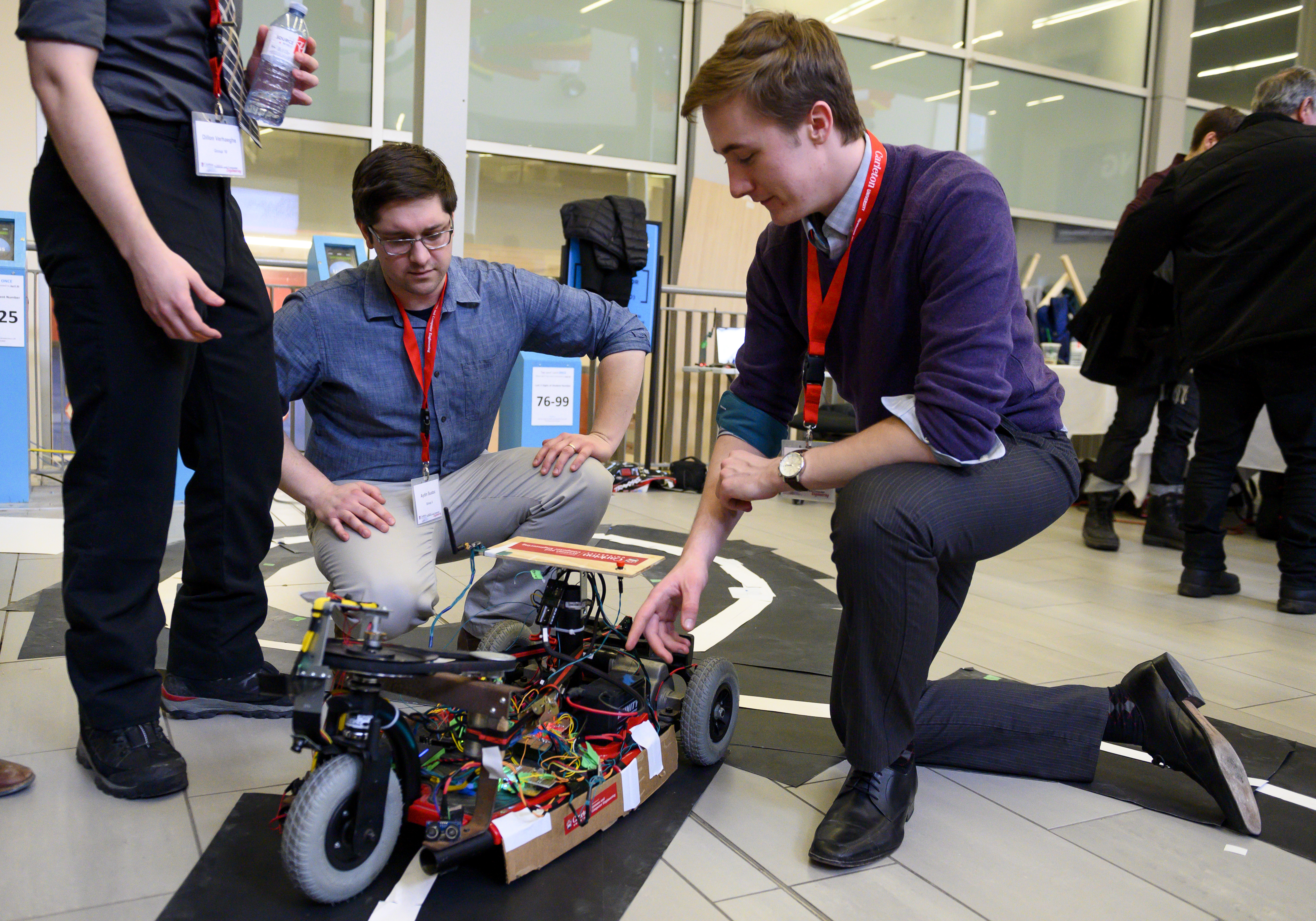
“The boards we were using only cost about $24, so they actually didn’t have enough memory on the board to store an entire photo,” Earle says. “We had to live process it as we were taking the photo to try to extract features from the image without being able to actually store the picture.”
Gohary says it was their creativity and drive that impressed him the most.
“I would ask them to interface a certain module, they’d come back the week after and say we tried that and decided on something else that we thought would be better,” Gohary says. “They constantly explored beyond the instructions that they were given.”
While the grades for the project came out in April, the team continued to work together until June in order to make improvements.
“I loved their collegiality, and that they always managed to reach a conclusive result,” Gohary says. “It’s very close to me and close to heart. I think the award is well-deserved.”
The project also won the IEEE Capstone Project competition regionally, placing first in both the systems and electronics categories. In Kingston, they came in second in the IEEE Eastern Ontario Oral Student Paper Competition. The team also shared their work with Gordon Bell and Michael Brown from the Blackberry-QNX Autonomous Vehicle Innovation Centre.
“I was excited and honoured to hear we won,” Earle says. “Everybody worked hard and worked together. We had some tough moments during the process, but we always pulled through.”
The W.E. Cowie Award was established in 2006 by Alexandra Cowie in memory of her husband, engineer Wilbur Elliott Cowie.
Tuesday, December 17, 2019 in Autonomous Vehicles, Capstone Design Projects, Computer Systems, Experiential Learning, Feature Stories, Systems and Computer, Undergraduate
Share: Twitter, Facebook

